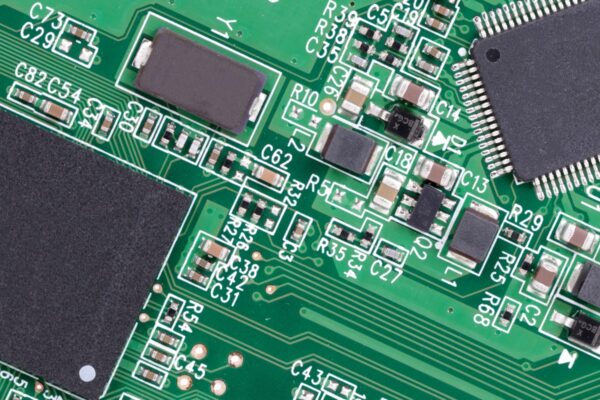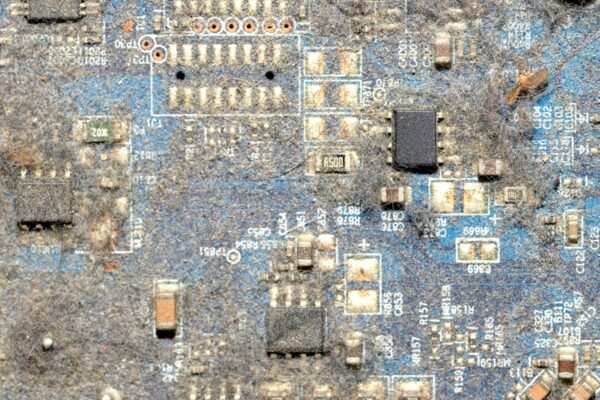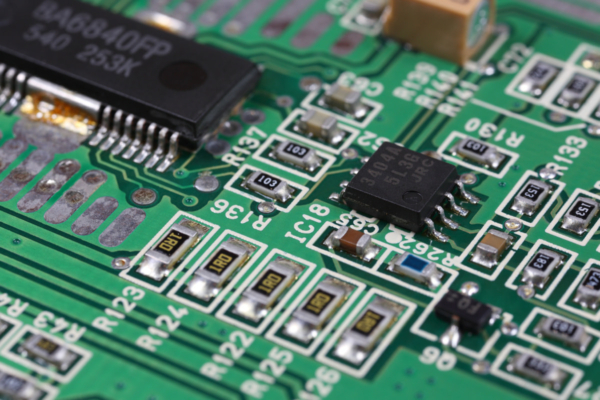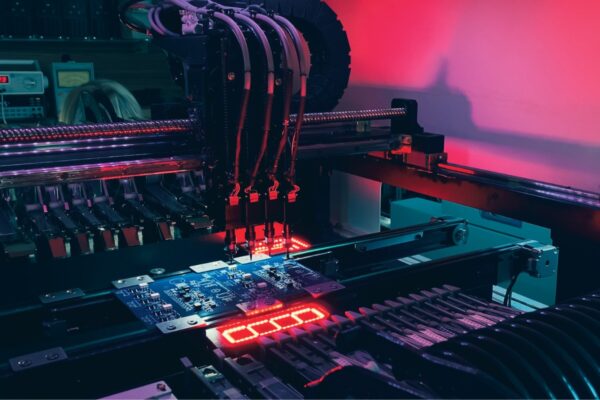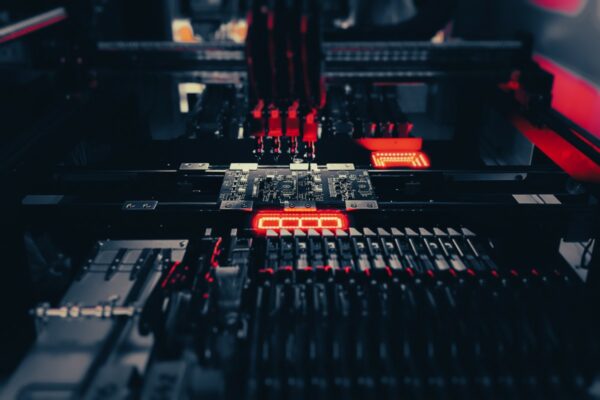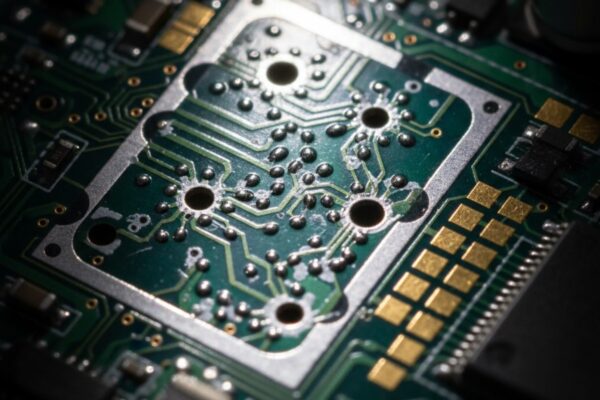A printed circuit board is an object of pure logic, a landscape of order designed to function within predictable parameters. Yet, many of these boards are destined for a world of chaos. They will operate in the engine bays of agricultural equipment, on remote telecommunication towers battered by coastal winds, and within medical devices where failure is not an option. For the electronics that must survive outside the sanctuary of a climate-controlled room, long-term reliability becomes a battle against the elements.
The primary defense in this battle is often a thin, transparent shield: a conformal coating. This dielectric film is meant to isolate the delicate circuitry from a hostile world. The choice of which film to use, however, is a decision steeped in nuance and consequence. A selection that appears sound on a datasheet can become the origin point of catastrophic field failures. Navigating this choice is less about finding a single best material and more about understanding a landscape of difficult trade-offs, where the realities of production and the physics of failure are inextricably linked.
The Nature of the Threat
Before any shield can be chosen, the weapon it must defend against must be understood. The term “harsh environment” is a convenient shorthand, but in manufacturing, precision is paramount. The specific nature of the harshness dictates every subsequent decision. Of all the threats, none is more pervasive than moisture. It is the slow, insidious creep of humidity that can awaken dormant ionic contaminants on a board’s surface, or the sudden shock of condensation from a rapid temperature drop. This moisture does not simply corrode. It can enable the growth of dendritic filaments between traces, creating microscopic, conductive pathways that manifest as inexplicable short circuits weeks or months after a product has shipped.
This threat is often magnified by chemical exposure. In industrial or automotive settings, a board may be subjected to splashes of fuel, hydraulic fluids, or aggressive cleaning agents. A coating that cannot withstand this chemical assault will quickly soften, swell, and lose its protective properties. For electronics deployed near the coast, the air itself becomes an adversary, carrying a fine mist of salt that deposits chloride ions. These ions are exceptionally effective at accelerating corrosion, turning a minor breach in the coating into a point of catastrophic failure.
These chemical and moisture threats rarely occur in isolation. They exist within a dynamic physical reality. The stress of a circuit board cycling from the cold of a winter night to the heat of full operation introduces mechanical forces, as materials expand and contract at different rates. This thermal stress can be compounded by the constant, high-frequency vibration of a running engine or the sudden shock of a dropped device. Under these forces, a coating that is too rigid can develop micro-fractures, invisible to the naked eye, that become entry points for the very contaminants it was meant to repel.
A Spectrum of Protection
The five primary families of conformal coatings are not a simple menu of options. They represent a spectrum of protection, where each step up in defense comes with a corresponding increase in cost, application complexity, and the difficulty of rework.
At one end of this spectrum lies Acrylic Resin (AR). It is the generalist, valued for its low cost and, most importantly, its simplicity. Application is straightforward, and rework is a matter of dissolving the coating with a gentle solvent, making field repairs uncomplicated. This ease of removal, however, reveals its fundamental weakness. Its resistance to chemicals, especially solvents, is poor. Acrylics offer a baseline of protection against humidity and dust, but they are best suited for controlled environments or for products where the probability of rework is high and the cost of that rework must be kept to an absolute minimum.
When the operating temperature becomes the dominant concern, Silicone Resin (SR) emerges as the specialist. Silicones maintain their properties across a remarkably wide temperature range, often from -65°C to 200°C. This resilience stems from their fundamental chemistry. The backbone of a silicone polymer is a chain of alternating silicon and oxygen atoms, whose chemical bonds are significantly stronger than the carbon-carbon bonds that form organic polymers like acrylics. This high bond energy provides exceptional thermal stability. At the other extreme, the structure allows for more rotational freedom, keeping the material flexible and resilient in deep cold where other polymers become brittle. This inherent flexibility also makes silicone an excellent choice for applications with high vibration or significant thermal cycling, as it can absorb mechanical stress without cracking. The trade-off for this performance is a significant increase in the difficulty of rework, which often requires mechanical abrasion or specialized chemical strippers.
For applications demanding durability against chemical assault, Urethane (Polyurethane) Resins (UR) offer a compelling solution. They provide a hard, resilient finish with excellent resistance to a wide range of chemicals, fuels, and solvents. This toughness, however, is a double-edged sword. The very properties that make urethanes so protective also make them exceptionally difficult to remove. Rework is a laborious process of abrasion that risks damaging the board, pushing the economics of repair toward simple replacement. Urethanes represent a commitment, a choice for products that will face known chemical hazards where field serviceability is a secondary concern.
Further along the spectrum of protection are the fortresses: Epoxy Resins (ER). Epoxies cure into an extremely hard and durable coating with outstanding resistance to both moisture and abrasion. But this hardness comes with a penalty of brittleness. Under the strain of repeated thermal cycles, an epoxy coating can be susceptible to stress fractures. And once applied, an epoxy is essentially permanent. Attempting to remove it almost guarantees significant damage to the board and its components. The decision to use an epoxy is a decision to treat the PCB assembly as a single, non-repairable unit, reserved for applications where the need for absolute protection outweighs any consideration of future repair.
At the far end of the spectrum lies Parylene (XY), a material in a class of its own. It is not applied as a liquid but as a gas in a vacuum deposition chamber. This process allows the Parylene to polymerize directly onto the board’s surface, creating a perfectly uniform, pinhole-free film that is impossibly thin yet provides the best barrier protection against both moisture and chemicals. This level of performance comes with significant costs. The deposition process is slow, expensive, and requires specialized capital equipment. Rework is all but impossible. Parylene is the choice for high-value, mission-critical applications, such as medical implants or aerospace systems, where performance cannot be compromised and cost is a distant consideration.
The Calculus of Selection: Beyond the Datasheet
A technical datasheet provides a comforting illusion of certainty. It lists values for dielectric strength, thermal range, and moisture resistance, all measured under pristine laboratory conditions. Production reality, however, is never so clean. The true art of selection lies in balancing the demands of the operating environment with the practical constraints of manufacturing and the entire lifecycle of the product.
The process begins with the environment, but it cannot end there. A requirement for chemical resistance might point toward a urethane, but this immediately raises a critical question about the product’s service life. If the device has a five-year warranty and a non-trivial failure rate, choosing a coating that makes repair impossible can transform a simple component swap into a costly full-unit replacement. The “total cost” of the coating must include not just the price per gallon of the material, but the downstream costs of field failures and warranty claims. This is a business decision as much as an engineering one.
The application method itself is a major part of this calculus. For a low-volume prototype run, manual brushing might suffice. But for production at scale, automated selective spraying is the standard. The viscosity of a chosen silicone or urethane must be compatible with the nozzles and pumps of the production line equipment. A mismatch can lead to inconsistent coating thickness, a common source of failure that is difficult to detect. The choice of coating is therefore constrained by the realities of the factory floor.
Specialized applications introduce further layers of complexity. For electronics operating in a vacuum, such as satellites, or in sealed enclosures with sensitive optics, the release of volatile compounds from a cured coating, known as outgassing, can be a source of mission failure. These outgassed molecules can condense on lenses or sensors, permanently degrading their performance. In these cases, a standard material is insufficient; one must select a specially formulated low-outgassing silicone or epoxy that has been certified to meet stringent standards. Similarly, for flexible circuits that must endure repeated bending, the stiffness of the coating is a critical parameter. A rigid epoxy would quickly crack and destroy the delicate traces. The choice naturally gravitates toward soft, flexible silicones or the exceptionally thin and pliable layers of Parylene.
Validation: The Only True Guarantee
Ultimately, industry standards like IPC-CC-830 serve as a starting point, a filter to identify credible materials. A coating qualified to this standard has demonstrated a baseline of competence in a controlled environment. But this qualification is no guarantee of success in your specific application. It is akin to a certificate of analysis for a raw material; it proves what the material is, not how it will behave in your unique process.
Experience from countless production runs shows that real-world failures often arise from a combination of stresses that no standard test anticipates. A coating that passes a 1000-hour salt spray test in a lab might fail after just 200 hours in the field because the test did not account for the simultaneous presence of vibration. The only way to truly ensure reliability is to validate the chosen coating on the actual production board, subjecting it to a customized testing protocol that accurately simulates its end-use environment. This process of testing to failure, under a combination of thermal, chemical, and mechanical stresses, is the only way to move from theoretical safety to proven reliability. The datasheet offers a promise; only rigorous, application-specific testing provides proof.
